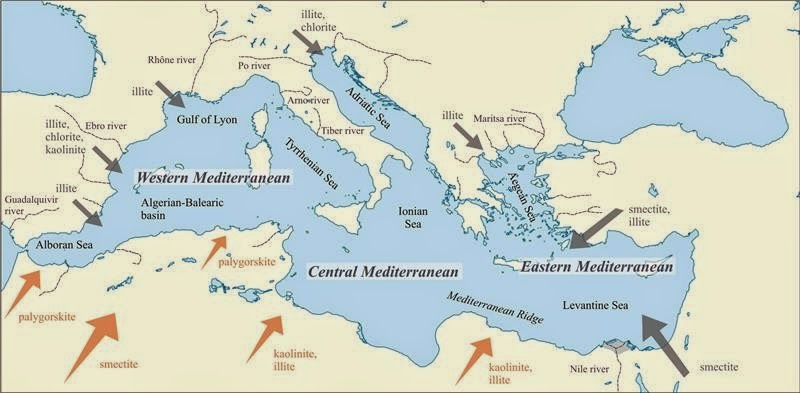
An international team of scientists which included three University of Granada and the Andalusian Institute of Earth Sciences researchers (a joint UGR-CISC centre) have found new data on the weather in the Mediterranean basin over the course of the past 20,000 years thanks to the chemical composition of sediments deposited in its seabed.
This work has been published in the journal Quaternary Science Reviews. Its authors include Francisca Martínez Ruiz y David Gallego Torres (Andalusia Institute of Earth Sciences, CSIC-UGR), both of them members of the RNM179 research group, as well as Miguel Ortega Huertas (from the Mineralogy and Petrology Department). The other co-authors are Miriam Kastner (Scripps Institution of Oceanography, UCSD, La Jolla, USA), Marta Rodrigo Gámiz (NIOZ Royal Netherlands Institute for Sea Research, Texel, The Netherlands) and Vanesa Nieto Moreno (Biodiversität und Klima Forschungszentrum, Frankfurt am Main, Germany).
Francisca Martínez Ruiz is the principal author. This researcher at the Andalusian Institute of Earth Sciences explains that “the study of the chemical composition of seabed sediments is particularly interesting because, beyond mere instrumental data, only indirect markers can provide information about what the climate was like in the past”
This high-resolution study of seabed sediments allows for a description of the climate in the past which will contribute to our knowledge of current climate change, and also to speculate with different climate change scenarios for the future. For purposes such as these “The Mediterranean is” according to Francisca Martínez, “an exceptional natural lab for paleoenvironmental research, since its nature as a semi-enclosed basin makes it particularly sensitive to, and turns it into an amplifier of, the effects of global change.”
Last Glacial Maximum
The interval of time surveyed by this scientific publication is of particular interest due to the significant climate changes that have taken place since the Last Glacial Maximum (LGM), such as the last Heinrich event (periods during which waves of icebergs dropped from glaciers and crossed the North Atlantic), the Bolling-Allerod transition, the Younger Dryas (a phase of climate cooling towards the end of the Pleistocene) and Holocene climate oscillations.
Scientists have evaluated the usefulness of the different geochemical and mineralogical markers for climatic variability, and have concluded that those which provide the most reliable and accurate sort of information are the following: Ti/Al relations (i.e. titanium and aluminium) and Zr/Al (zirconium and aluminium) for the interpretation of variations in wind patterns, and therefore for the reconstruction of arid and wet cycles; relations MG/Al (magnesium and aluminium), K(Al (potassium and aluminium) and Rb/Al (rubidium and aluminium) as markers for the variation in fluvial patterns, and the conditions for oxygenation reconstructed thanks to the relations between trace metals (U, Mo, V, Co, Ni, Cr, i.e. uranium, molybdenum, vanadium, cobalt, nickel and chromium)
The study of biological productivity has turned out to be of particular interest. It was reconstructed from the barium (Ba) content in sediments derived from biogenic baryte.
“Given that much climate change is cyclical,” prof. Martínez points out, “predicting the evolution of future climate and its control mechanisms, both natural and anthropogenic, requires a proper understanding of past climate systems, and of the response of its different components (atmosphere, biosphere, lithosphere, hydrosphere, cryosphere) at a scale larger than that of instrumental record.”
Reference:
F. Martinez-Ruiz, M. Kastner, D. Gallego-Torres, M. Rodrigo-Gámiz, V. Nieto-Moreno, M. Ortega-Huertas. Paleoclimate and paleoceanography over the past 20,000 yr in the Mediterranean Sea Basins as indicated by sediment elemental proxies. Quaternary Science Reviews, 2015; 107: 25 DOI: 10.1016/j.quascirev.2014.09.018
Note: The above story is based on materials provided by University of Granada.










